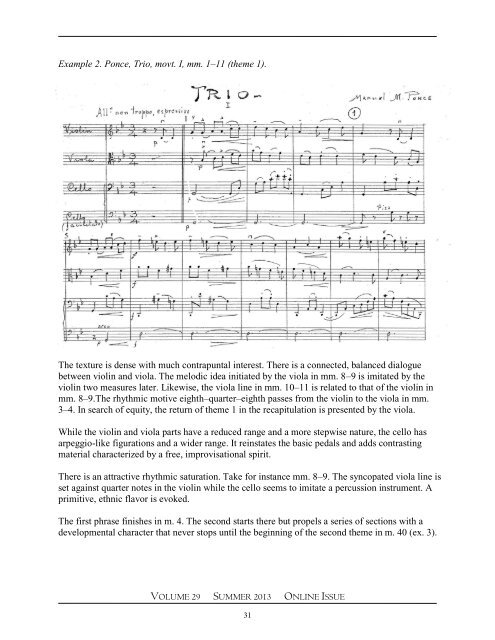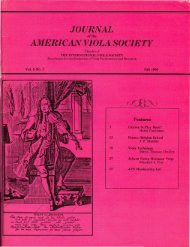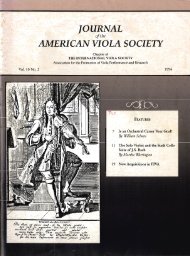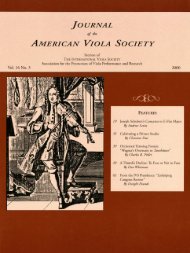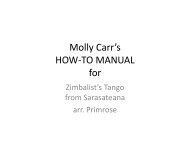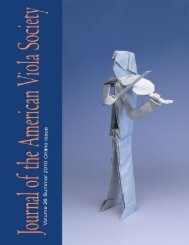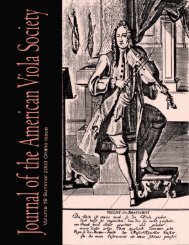Summer 2013 - The American Viola Society
Summer 2013 - The American Viola Society
Summer 2013 - The American Viola Society
Create successful ePaper yourself
Turn your PDF publications into a flip-book with our unique Google optimized e-Paper software.
Example 2. Ponce, Trio, movt. I, mm. 1–11 (theme 1).<br />
<strong>The</strong> texture is dense with much contrapuntal interest. <strong>The</strong>re is a connected, balanced dialogue<br />
between violin and viola. <strong>The</strong> melodic idea initiated by the viola in mm. 8–9 is imitated by the<br />
violin two measures later. Likewise, the viola line in mm. 10–11 is related to that of the violin in<br />
mm. 8–9.<strong>The</strong> rhythmic motive eighth–quarter–eighth passes from the violin to the viola in mm.<br />
3–4. In search of equity, the return of theme 1 in the recapitulation is presented by the viola.<br />
While the violin and viola parts have a reduced range and a more stepwise nature, the cello has<br />
arpeggio-like figurations and a wider range. It reinstates the basic pedals and adds contrasting<br />
material characterized by a free, improvisational spirit.<br />
<strong>The</strong>re is an attractive rhythmic saturation. Take for instance mm. 8–9. <strong>The</strong> syncopated viola line is<br />
set against quarter notes in the violin while the cello seems to imitate a percussion instrument. A<br />
primitive, ethnic flavor is evoked.<br />
<strong>The</strong> first phrase finishes in m. 4. <strong>The</strong> second starts there but propels a series of sections with a<br />
developmental character that never stops until the beginning of the second theme in m. 40 (ex. 3).<br />
VOLUME 29 SUMMER <strong>2013</strong> ONLINE ISSUE<br />
31


